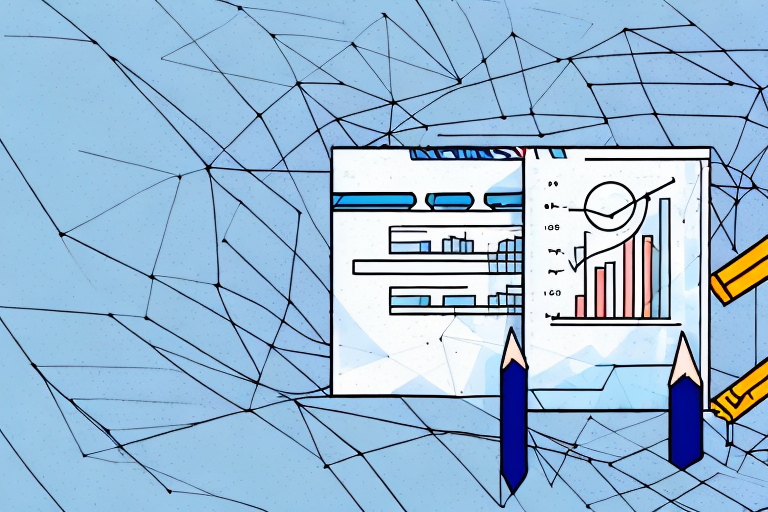Currency devaluation can have far-reaching consequences for economies and individuals alike. As policymakers and economists grapple with the impact of such devaluations, they often turn to surveys and polls to gather valuable insights. These tools enable them to gauge public opinion, assess the effects of devaluation, and make informed decisions. But just how effective are surveys and polls during currency devaluation?
Understanding Currency Devaluation
In order to appreciate the role of surveys and polls, it is crucial to first understand the concept of currency devaluation. Put simply, devaluation refers to the deliberate decrease in the value of a country’s currency in relation to other currencies. This can occur due to various factors such as monetary policy, trade imbalances, or economic crises.
Devaluation affects a country’s economy in multifaceted ways. While it may make exports more competitive and stimulate economic growth, it can also lead to inflation, increase the cost of imports, and erode the purchasing power of citizens.
When a country decides to devalue its currency, it is essentially reducing the exchange rate of its currency against other currencies. For instance, if one unit of a currency could previously be exchanged for two units of another currency, devaluation might alter this exchange rate to one unit for three units, thus making the currency less valuable.
Devaluations are often carried out by central banks or governments to achieve various economic objectives such as boosting exports, attracting foreign investments, or reducing trade deficits. By reducing the value of its currency, a country can potentially make its domestic products more affordable for foreign buyers, promoting export-led growth.
However, it is important to note that devaluation can also have adverse effects. When a currency depreciates, imports become more expensive, potentially raising consumer prices and causing inflation. This can have a negative impact on the purchasing power of citizens, especially those with fixed incomes.
Moreover, devaluation can also affect the overall stability of a country’s economy. In times of economic crisis, devaluation can be seen as a desperate measure to stimulate economic growth and regain competitiveness. However, it is not without risks. Devaluation can lead to capital flight, as investors may lose confidence in the country’s economic stability and seek safer investment opportunities elsewhere.
Furthermore, devaluation can have implications for international trade. While it may make a country’s exports more competitive, it can also lead to retaliatory actions from trading partners. If multiple countries engage in competitive devaluations, it can spark a currency war, where each country tries to devalue its currency to gain a competitive advantage in international trade. This can result in increased trade tensions and disrupt global economic stability.
In conclusion, currency devaluation is a complex economic phenomenon with both positive and negative consequences. While it can potentially boost exports and stimulate economic growth, it can also lead to inflation, increase the cost of imports, and erode the purchasing power of citizens. It is important for policymakers to carefully consider the implications of devaluation and weigh its potential benefits against the risks involved.
Surveys and polls are essential tools in economic studies, providing researchers with valuable data and insights. When conducting surveys and polls in economic analysis, researchers follow a systematic process to ensure accuracy and reliability.Firstly, researchers define the objectives of the study and determine the specific questions they want to address. For example, in the context of currency devaluation, researchers may want to understand how individuals perceive the impact on their personal finances and spending habits.Once the objectives are set, researchers design the survey or poll questionnaire. This involves crafting clear and unbiased questions that capture the relevant information. It is crucial to avoid leading questions or any form of bias that could influence respondents’ answers.To ensure a representative sample, researchers employ various sampling techniques. They may use random sampling, where individuals are selected randomly from the population, or stratified sampling, where the population is divided into subgroups, and individuals are selected from each group. This helps to ensure that the survey results are reflective of the broader population.After designing the survey and selecting the sample, researchers distribute the questionnaire to the respondents. This can be done through various methods, such as online surveys, telephone interviews, or face-to-face interactions. Researchers may also collaborate with market research firms or use existing survey panels to reach a wider audience.Once the data collection is complete, researchers analyze the survey responses. This involves organizing and summarizing the data, identifying patterns and trends, and drawing meaningful conclusions. Statistical techniques, such as regression analysis or correlation analysis, may be employed to examine the relationship between variables and uncover insights.The findings from surveys and polls provide economists with a wealth of information. They can gain insights into how devaluation affects consumer behavior, such as changes in purchasing patterns or preferences. This information is crucial for businesses to adapt their strategies and for policymakers to design effective economic policies.In addition to understanding consumer behavior, surveys and polls also shed light on economic trends. By collecting data on various economic indicators, such as employment rates, inflation levels, or investment sentiments, economists can assess the overall health of the economy and make informed forecasts.In conclusion, surveys and polls are indispensable tools in economic analysis. They provide researchers with valuable insights into public opinion, consumer behavior, and economic trends. By conducting well-designed surveys and polls, economists can gather relevant data and make informed decisions that shape policies and drive economic growth.
